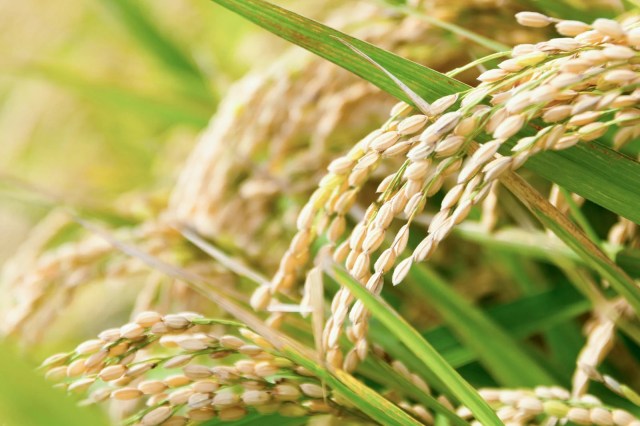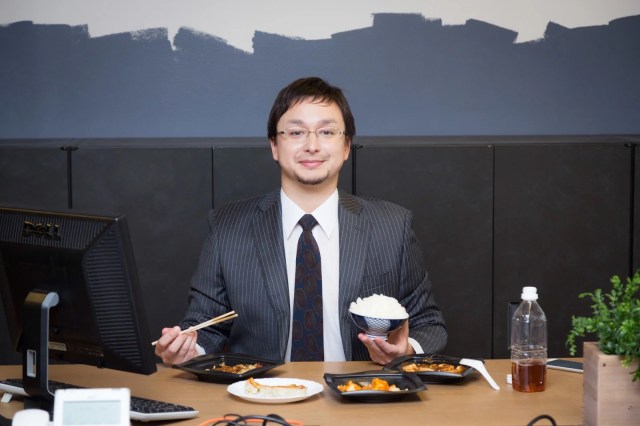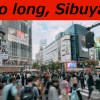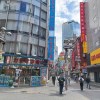
Tourists are said to be eating Japan out of rice, depleting the local food supply.
Rice has long been a major staple in Japan, where people have been known to eat it for breakfast, lunch and dinner and the majority of the population can’t imagine their lives without it. So when stocks started disappearing from store shelves this summer, it created a panic in Japan, with people wanting to know what was causing the sudden shortage.
According to media reports, the shortage was affecting suppliers around the country, and interviews revealed many wholesalers were concerned, with one in the top producing region of Niigata Prefecture saying they only had 10 tonnes (2,2046 pounds) of rice left at a time when they would usually have 240 tonnes (52,919 pounds).
Other retailers echoed these concerns, saying they’d never seen anything like it, and when nationwide stock levels at the end of June were revealed to be the lowest in 25 years, many stores implemented purchase restrictions, limiting sales to one bag per person. By July, a large number of retailers were unable to provide any rice at all.
The situation has been so dire that the media has even coined a term for it — “Reiwa no Kome Soudou” (“Reiwa Rice Riots“), with “Reiwa” being the current imperial era. While there haven’t been riots in the traditional sense of the word, the shortage has led to bad behaviour in terms of panic buying and with stocks remaining low, things are yet to improve.
So what led to the shortage of rice in Japan? Well, according to professionals in the industry, the initial problem was intense heat last summer, which led to low yield in the autumn harvests. While many farmers believe this is a direct effect of global warming, they also say it’s not the only factor at play, because the record low yield coincided with a record high, in terms of inbound tourist numbers.
Farmers and wholesalers pointed out that the rapid increase in consumption of Japanese food by overseas tourists played a factor in the shortage, exacerbating the imbalance between supply and demand. With visitor arrivals numbering over 3 million per month in the four consecutive months to June, compared to 1.8 million to 2 million per month during the same period last year, this is a sharp increase in numbers, so the impact of tourism can’t be ruled out.
A poor rice harvest combined with booming tourist numbers isn’t an ideal situation for anyone — not only does it increase the price of rice when demand outweighs supply, the shortage also affects the livelihoods of farmers, wholesalers and restaurant owners, while negatively impacting regular individuals who rely on the everyday staple. However, according Hiroyuki Kishi, a former economic and industrial bureaucrat who recently appeared on a television programme in relation to the rice shortage, there may be deeper problems with the rice supply. Kishi claims that the Ministry of Agriculture, Forestry and Fisheries has been encouraging farmers to grow livestock feed instead of rice due to a decrease in demand for the grain, which has reduced the amount of rice Japan produces.
While the government has now announced that stocks of rice should return to normal from September, when new harvests are produced, perhaps the Reiwa Rice Riots will prompt the government to rethink its approach to supporting rice farmers. Especially now, as tourists eat Japan out of rice and prove there is growing demand for the Japanese staple.
Sources: FNN, TBS (1, 2), JNTO
Top image: Pakutaso
Insert images: Pakutaso (1, 2)
● Want to hear about SoraNews24’s latest articles as soon as they’re published? Follow us on Facebook and Twitter!



 Japan’s ‘agri-tech’ farming revolution
Japan’s ‘agri-tech’ farming revolution Flour products sell online for outrageous prices in Japan as demand for them skyrockets
Flour products sell online for outrageous prices in Japan as demand for them skyrockets Nara deer “addicted” to rice crackers, lose weight with no tourists to feed them
Nara deer “addicted” to rice crackers, lose weight with no tourists to feed them Furikake rice seasoning sales are soaring, which is bad news for Japan as a whole
Furikake rice seasoning sales are soaring, which is bad news for Japan as a whole McDonald’s Japan to suspend sales of medium and large-size fries for one week
McDonald’s Japan to suspend sales of medium and large-size fries for one week Anime Industry Report shows overseas anime market is bigger than Japanese one, but is this a cultural tipping point?
Anime Industry Report shows overseas anime market is bigger than Japanese one, but is this a cultural tipping point? The top 10 annoying foreign tourist behaviors on trains, as chosen by Japanese people【Survey】
The top 10 annoying foreign tourist behaviors on trains, as chosen by Japanese people【Survey】 Japan’s deadliest food claims more victims, but why do people keep eating it for New Year’s?
Japan’s deadliest food claims more victims, but why do people keep eating it for New Year’s? Starbucks Japan reveals new Valentine’s Day goods for 2025
Starbucks Japan reveals new Valentine’s Day goods for 2025 Kyoto reportedly planning to raise hotel guest taxes, create highest accommodation tax in Japan
Kyoto reportedly planning to raise hotel guest taxes, create highest accommodation tax in Japan Japanese KitKat gets a new look as a lucky Pizza Hut Melt in Japan
Japanese KitKat gets a new look as a lucky Pizza Hut Melt in Japan Nintendo and Godiva team up for fancy fun chocolate line【Photos】
Nintendo and Godiva team up for fancy fun chocolate line【Photos】 Overseas Uber driver and anime fan gets the Cowboy Bebop surprise of a lifetime【Video】
Overseas Uber driver and anime fan gets the Cowboy Bebop surprise of a lifetime【Video】 The unforgettable Dragon Quest theme music took an amazingly short time to write, composer says
The unforgettable Dragon Quest theme music took an amazingly short time to write, composer says Starbucks Japan saves the best for last in our fukubukuro lucky bag haul
Starbucks Japan saves the best for last in our fukubukuro lucky bag haul Let’s go open a Lego Japan lucky bag…o
Let’s go open a Lego Japan lucky bag…o There’s an official PlayStation lucky bag, but what’s inside?【Photos】
There’s an official PlayStation lucky bag, but what’s inside?【Photos】 Starbucks Japan’s Lucky Bag #3: A fukubukuro surprise we weren’t expecting
Starbucks Japan’s Lucky Bag #3: A fukubukuro surprise we weren’t expecting The etiquette rules for visiting Shinto shrines in Japan
The etiquette rules for visiting Shinto shrines in Japan Square Enix releases a Final Fantasy fukubukuro lucky bag for New Year’s in Japan
Square Enix releases a Final Fantasy fukubukuro lucky bag for New Year’s in Japan The Häagen-Dazs Japan fukubukuro lucky bag is filled with…ice creams from 2023
The Häagen-Dazs Japan fukubukuro lucky bag is filled with…ice creams from 2023 McDonald’s Japan has a fukubukuro lucky bag that everyone wants to get their hands on
McDonald’s Japan has a fukubukuro lucky bag that everyone wants to get their hands on Bear breaks into house in Japan, quickly begins spending winter exactly like Japanese people do
Bear breaks into house in Japan, quickly begins spending winter exactly like Japanese people do Hayao Miyazaki says Happy New Year to Studio Ghibli fans with new art for Year of the Snake
Hayao Miyazaki says Happy New Year to Studio Ghibli fans with new art for Year of the Snake Japanese company develops classy heavy metal band frames for glasses
Japanese company develops classy heavy metal band frames for glasses This downtown Tokyo cafe is like a time machine that takes you back 50 years into the past
This downtown Tokyo cafe is like a time machine that takes you back 50 years into the past What’s in Starbucks Japan’s fukubukuro lucky bag for 2025?
What’s in Starbucks Japan’s fukubukuro lucky bag for 2025? Station of despair: What to do if you get stuck at the end of Tokyo’s Chuo Rapid Line
Station of despair: What to do if you get stuck at the end of Tokyo’s Chuo Rapid Line McDonald’s new Happy Meals offer up cute and practical Sanrio lifestyle goods
McDonald’s new Happy Meals offer up cute and practical Sanrio lifestyle goods Foreign tourists on Shinkansen bullet train break suitcase etiquette, angering local passengers
Foreign tourists on Shinkansen bullet train break suitcase etiquette, angering local passengers Possessing Harry Potter’s Sword of Godric Gryffindor is now illegal in Japan
Possessing Harry Potter’s Sword of Godric Gryffindor is now illegal in Japan [Deleted] Article written for April Fool’s Day 2018
[Deleted] Article written for April Fool’s Day 2018 Japanese government to make first change to romanization spelling rules since the 1950s
Japanese government to make first change to romanization spelling rules since the 1950s Foreigner’s request for help in Tokyo makes us sad for the state of society
Foreigner’s request for help in Tokyo makes us sad for the state of society Japanese convenience store Family Mart announces abolishment of eat-in spaces
Japanese convenience store Family Mart announces abolishment of eat-in spaces Life-size vibrating Legend of Zelda Master Sword for sale from Nintendo【Photos】
Life-size vibrating Legend of Zelda Master Sword for sale from Nintendo【Photos】 Princesses, fruits, and blacksmiths: Study reveals the 30 most unusual family names in Japan
Princesses, fruits, and blacksmiths: Study reveals the 30 most unusual family names in Japan The number of elderly people in Japan this year has yet again smashed multiple records
The number of elderly people in Japan this year has yet again smashed multiple records Stunning Saitama rice field art snags Guinness record
Stunning Saitama rice field art snags Guinness record Shimane Prefecture’s shrine-headed mascot is now an adorable rice field
Shimane Prefecture’s shrine-headed mascot is now an adorable rice field Carb-free sushi? Japanese sushi restaurant ditches the rice in its new menu items
Carb-free sushi? Japanese sushi restaurant ditches the rice in its new menu items Nara deer leave park, head to station for food as tourist numbers tumble due to coronavirus
Nara deer leave park, head to station for food as tourist numbers tumble due to coronavirus Remote-control VR robots to start working in Japanese convenience stores this summer
Remote-control VR robots to start working in Japanese convenience stores this summer Nagoya University develops rice plant that grows pure sugar
Nagoya University develops rice plant that grows pure sugar Deer in Nara Park outnumber visitors, display baffling summer gathering behaviour
Deer in Nara Park outnumber visitors, display baffling summer gathering behaviour 15 tons of sweet potatoes stolen in rural Japan, criminal crew may be targeting spuds
15 tons of sweet potatoes stolen in rural Japan, criminal crew may be targeting spuds Eat all of your rice! Culture connections with Japan’s favorite food
Eat all of your rice! Culture connections with Japan’s favorite food Beware the rise of overpriced “Inbound Don” at tourist spots in Japan
Beware the rise of overpriced “Inbound Don” at tourist spots in Japan Chinese people hand out free surgical masks in Japan as coronavirus outbreak continues【Video】
Chinese people hand out free surgical masks in Japan as coronavirus outbreak continues【Video】 How do other flavors of ice cream rice compare to Meiji’s matcha ice cream rice recipe?
How do other flavors of ice cream rice compare to Meiji’s matcha ice cream rice recipe? Using red sushi rice makes a real difference, if it’s paired with the right fish【Taste test】
Using red sushi rice makes a real difference, if it’s paired with the right fish【Taste test】 Dragon Quest celebrates anniversary with enormous rice paddy art in Gyoda, Japan【Video】
Dragon Quest celebrates anniversary with enormous rice paddy art in Gyoda, Japan【Video】 Drinking wine made from the only train station platform vineyard in Japan
Drinking wine made from the only train station platform vineyard in Japan
Leave a Reply